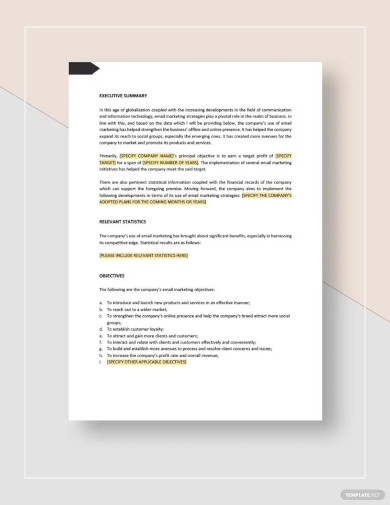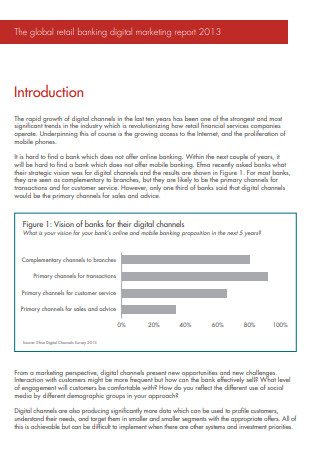Marketing Report Samples
-

B2B Marketing Report
download now -

Affiliate Marketing Report
download now -

Event Marketing Report
download now -

Client Marketing Report
download now -

Marketing Report Template
download now -

Sample Marketing Report Template
download now -

Restaurant Marketing Report Template
download now -

Healthcare Marketing Report Template
download now -

Email Marketing Report Template
download now -

Social Media Marketing Report Template
download now -

Marketing Audit Report Template
download now -

Marketing Campaign Report Template
download now -

Marketing Analysis Report Template
download now -

Telemarketing Report Template
download now -

Marketing Report Presentation Template
download now -

Freelance Marketing Report Template
download now -

Monthly Marketing Report Template
download now -

Simple Marketing Report Template
download now -

Sample Social Media Marketing Report Template
download now -

Dealer Marketing Report
download now -

Bi-Weekly Marketing Report
download now -

Exchange Marketing Fee Report
download now -

Marketing and Business Report
download now -

Regional Marketing Plan Report
download now -

Tourism Marketing Report
download now -

Beer Marketing Report
download now -

Annual Marketing Report
download now -

Digital Marketing Report
download now -

Pharmaceutical Marketing Report
download now -

December Marketing Report
download now -

Simple Marketing Report
download now -

Marketing Research Report
download now -

Organic Marketing Report
download now -

Marketing Survey Report
download now
FREE Marketing Report s to Download
Marketing Report Format
Marketing Report Samples
What is a Marketing Report?
Different Types of Marketing Reports
What are the uses of Marketing Report?
How To Create a Marketing Report
FAQs
How often should a marketing report be created?
What key metrics are included in a marketing report?
How can a marketing report improve a marketing strategy?
What’s the role of data visualization in a marketing report?
How can a marketing report enhance audience targeting?

Download Marketing Report Bundle
Marketing Report Format
[Company Name] Marketing Report
Date: [Insert Date]
Prepared By: [Your Name/Team]
1. Executive Summary
- Brief overview of the report, key findings, and insights.
- Summarize objectives, strategies, and primary results.
2. Objectives
- List the marketing goals (e.g., increase brand awareness, generate leads, improve conversion rates).
3. Target Audience
- Describe the primary and secondary target audiences.
- Include demographics, psychographics, and buying behavior.
4. Market Analysis
- Industry Trends: Brief analysis of industry trends affecting marketing.
- Competitive Analysis: Overview of competitors’ strategies and positioning.
- SWOT Analysis: Strengths, Weaknesses, Opportunities, and Threats.
5. Marketing Strategies
- Campaigns: List ongoing and upcoming campaigns.
- Channels: Describe the marketing channels used (e.g., social media, email, SEO).
- Messaging: Core messages and positioning statements.
6. Performance Metrics
- KPIs: List Key Performance Indicators tracked.
- Data Summary: Include key metrics for the reporting period, such as:
- Impressions
- Click-through Rate (CTR)
- Conversion Rate
- Cost Per Acquisition (CPA)
- Return on Investment (ROI)
7. Budget Analysis
- Total Budget: Overview of the allocated budget and expenditure.
- Channel Spending: Breakdown by channel (e.g., social media, paid ads).
- Cost Efficiency: Analysis of cost-effectiveness of various strategies.
8. Key Insights & Analysis
- Discuss any significant trends or unexpected outcomes.
- Insights on what worked well and what could be improved.
9. Recommendations
- Provide actionable steps for improvement or new opportunities.
- Outline potential adjustments to current strategies.
10. Conclusion
- Summary of overall performance.
- Closing thoughts and next steps for the upcoming period.
11. Appendices (Optional)
- Attach additional charts, data tables, or specific reports.
What is a Marketing Report?
A marketing report is a detailed document that outlines and assesses the performance of a business’s marketing efforts over a specified period. It typically includes data on campaigns, customer demographics, engagement levels, revenue generation, and other relevant metrics. By analyzing these metrics, businesses can determine the effectiveness of their strategies, refine future approaches, and align their marketing with business objectives. Marketing reports help stakeholders understand campaign performance, optimize strategies, and improve ROI. You can also see more on Marketing Business Report.
Different Types of Marketing Reports

The type of Marketing Report you create depends on the data that you need. Know the purpose of the marketing report and what kind of data you would want to accumulate. The data collected helps marketers make decisions about their Marketing Plans to drive better business growth, so it’s crucial to think about the metrics connected to the success of your business. Include the most crucial information relevant to your team so they can plot the next steps in the marketing process.
What are the uses of Marketing Report?
A marketing report accumulates data on a business or organization’s marketing efforts. The existence of this report establishes open communication with clients regularly through them giving additional input, reminders, and follow-up questions they may have. You can also see more on Social Media Report.
- Tracks how your Marketing Strategies are performing: Crafting a marketing report helps to monitor the situation of your marketing activities, and if they are successful. It gathers data on how your business is doing in terms of lead engagement and how they are converted into consumers of your products and services. It helps you learn and track the Best Marketing Strategies and those that bring down your sales and business growth for insight into better business marketing.
- Identify resource allocation for marketing efforts: Determines whether you’ve been getting the most from the resources allocated for your marketing efforts.
- Identify income-generating channels: When are able to collect data from your marketing campaigns, you are able to determine what’s getting results and what’s not. When you analyze what’s happening in your campaign, you can decide which sources have been generating successful results for your marketing department and plan effective marketing strategies to increase sales. The financial department as well will benefit from this as well, as you will be cutting costs by allocating your funds to the correct platforms that your business utilizes to carry out its marketing efforts.
- Propose for an increased marketing budget: When all the data collected is measured according to your marketing goals and there seem to be lapses within the project, or additional campaigns that need to run, this results in needing an increased Marketing Budget. Having a clear and concise record of your marketing data is a gauge if there are any changes that need to be made.
How To Create a Marketing Report

The scope of a marketing report varies according to the number of platforms that a business utilizes to carry out its marketing efforts. The purpose of your report needs to be determined ahead of time. It presents how your business’ marketing efforts are performing. It will be received by the stakeholders, clients, and CEOs. Fill it with all the necessary information that will build your Marketing Strategies. You need to include data that gives good insight you can use to tweak your existing strategy. These are what a Marketing Report contains. You can also see more on Agency Report.
Step 1: Define the Report’s Objective
To begin, determine the specific goal of the marketing report. It may focus on evaluating a specific campaign, analyzing audience engagement, or measuring ROI. Defining the purpose will guide the selection of metrics and data sources, ensuring the report meets business needs.
Step 2: Gather Relevant Data
Collect data from various platforms, such as Google Analytics, CRM systems, and social media tools. Gather information on metrics relevant to your report’s objective, including conversion rates, click-through rates, and customer demographics. Ensure that data is recent and reflects the reporting period. You can also see more on Daily Sales Reports.
Step 3: Analyze the Data
After data collection, interpret the metrics to find insights and trends. Identify high-performing areas, as well as areas needing improvement. Highlight any significant changes or patterns that may influence future marketing decisions. This analysis forms the core content of the report.
Step 4: Organize the Report Structure
Create a clear structure by organizing the report into sections, such as objectives, key metrics, analysis, and recommendations. Use headings and subheadings to make the report easy to read and understand. Include visuals like charts and graphs to enhance clarity and readability. You can also see more on Product Report.
Step 5: Conclude and Recommend
Summarize the key findings and include actionable recommendations. Outline specific changes or strategies based on your analysis to guide future marketing actions. This section should provide clear guidance, helping stakeholders make data-informed decisions about upcoming campaigns.
A marketing report is essential for evaluating the effectiveness of marketing efforts and guiding future decisions. By providing a clear analysis of key metrics and outcomes, it enables businesses to refine their strategies and maximize ROI. Regularly creating and reviewing marketing reports ensures that resources are invested wisely and that campaigns align with organizational goals. Over time, these insights lead to improved customer engagement, stronger brand positioning, and higher profitability, making marketing reports a critical tool for sustainable growth. You can also see more on Business Report.
FAQs
How often should a marketing report be created?
The frequency depends on the reporting needs. Many businesses create monthly or quarterly reports to monitor ongoing campaigns, while others may opt for weekly reports during intensive marketing periods. You can also see more on Sales Summary Report.
What key metrics are included in a marketing report?
Common metrics include conversion rates, click-through rates, engagement levels, customer demographics, and ROI. The specific metrics depend on the report’s objective and the campaign being analyzed.
How can a marketing report improve a marketing strategy?
By analyzing past performance and identifying trends, marketing reports highlight successful tactics and areas needing improvement. This allows businesses to adjust their strategies for better results in future campaigns. You can also see more on Lead Management Report.
What’s the role of data visualization in a marketing report?
Data visualization tools, like charts and graphs, simplify complex data, making it easier for readers to understand trends and performance metrics. Visuals enhance readability, allow for quick comparisons, and highlight key insights for stakeholders.
How can a marketing report enhance audience targeting?
By analyzing audience demographics and engagement metrics, marketing reports reveal customer preferences and behaviors. These insights help businesses refine their targeting strategies to better reach and engage their desired audience segments. You can also see more on Analysis Report.
